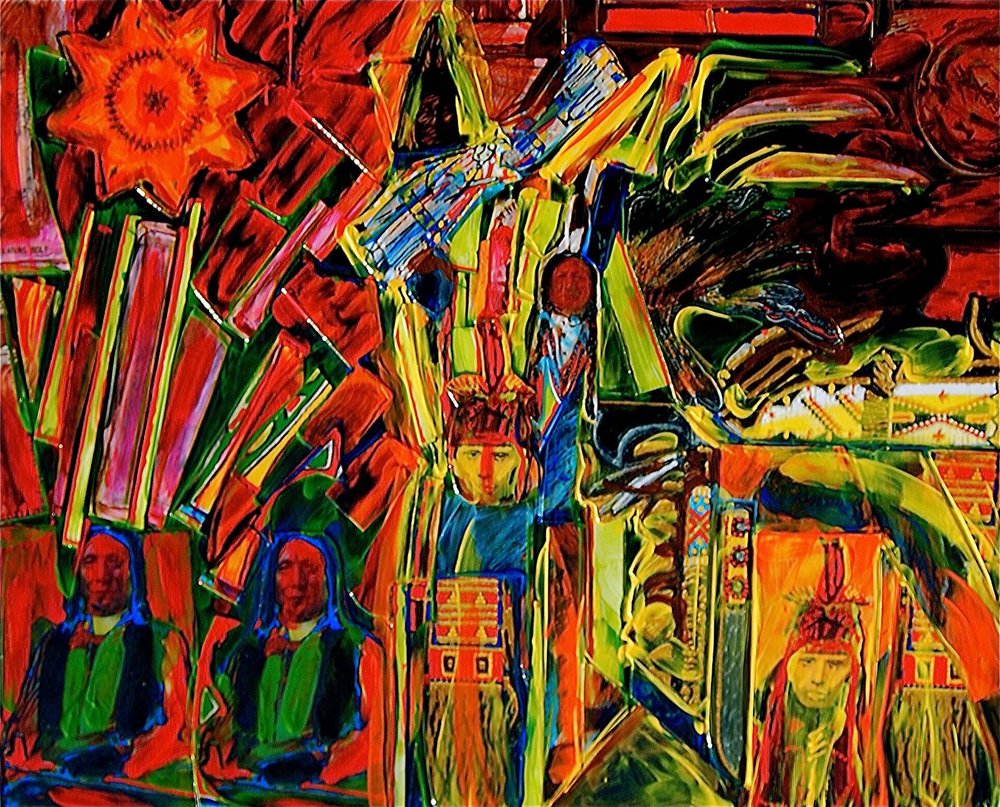New Yorkers help save Lakota, a language beset by an ‘unfortunate history’
Feb. 27, 2023, 10:01 a.m.
Speakers of the endangered Lakota language gathered in Manhattan to help preserve it.

Among the 600 languages spoken in the five boroughs is Lakota, a Native American language spoken primarily by members of the Lakota tribes in North and South Dakota.
According to the Indiana-based Language Conservancy, 2,900 of the estimated 7,000 languages spoken across the world are now endangered.
Lakota is among them.
This past weekend, Lakota speakers were in New York City to help keep the language alive. They participated in the Lakota Language Weekend at the nonprofit American Indian Community House, located at 39 Eldridge St. in Manhattan.
Ahead of the gathering, Weekend All Things Considered host Tiffany Hanssen spoke with Wil Meya, CEO of The Language Conservancy and executive director of the Lakota Language Consortium, about the effort. Their conversation has been lightly edited for clarity and content.
Hanssen: Before we talk about the events happening in New York this [past] weekend, I just want to clarify for folks who might not know: Who are Lakota speakers? And today, how many people are speaking Lakota as their primary language?
Meya: Lakota is one of the top 10 major languages, Native American languages, in the U.S. Over 100,000 Lakota people live in North and South Dakota. And there are probably about 1,500 speakers left of a language that was once spoken by tens of thousands of people.
Why exactly is the language in danger? What qualifies it as being in danger? Is it not being taught? Is it not being passed down? What are the factors at play here?
There's a lot of unfortunate history involved with the demise of Lakota, as well as many of the other Native American languages, as well: things like boarding schools and other kinds of policies ended up creating a situation where parents stopped passing on the language to their children. That happened around the mid-1950s. And so, essentially, people born after 1954, 1955 did not pass on the language to their children. From that moment on, the real number of speakers began to decline. And so now we're at a point where those first language speakers – that last generation of first language speakers – are in their 70s and 80s.
And, of course, young people want to learn their language and it's been difficult for them to learn it in schools. So this is a window of opportunity for young people to learn their language before their elders pass on.
So what does preservation look like? Are we talking about creating a dictionary? Are there classes? Is there some way to increase access to these Lakota speakers you're talking about that are aging?
“Language vitalization,” as we call it, is a complex, multifaceted process that involves things like having dictionaries and textbooks, but it also involves training teachers, and having events that allow people to participate and learn the language. It involves creating technologies that create access to the language, that young people can then use to look up words or learn phrases or all the other things that are needed. So there needs to be something for everybody when it comes to language revitalization and learning a language.
Organizations like Lakota Language Consortium are there to try and fill that gap, and provide those materials and opportunities for young people to learn their language and connect and maintain that continuity.
I want to talk about what's happening in New York City this [past] weekend. There's an effort to teach more people the Lakota language. Is that right?
Yes. Our primary service area is working in North and South Dakota. But, every now and then, we work outside of that area to promote the language among and serve those community and tribal members that are outside of the Dakotas.
So we've been doing an event in New York for the last four or five years, and it really has a great turnout. People are always very excited to be a part of it. Generally these “language weekends,” as we call them, are just a starter, an intense weekend that gets people feeling like, “Wow, I can really learn this language. This is totally doable.”
And hopefully, that gets them started on their language-learning journey, which is really what we want to accomplish.
And if there's a website folks need to go to to find more information?
That would be Lakhota.org. (Both “Lakota” and “Lakhota” are used.)
Well, thanks so much for your time today and philámayaye [thank you].
Oh, your Lakota is improving, Tiffany. Love it. Philámayaye.